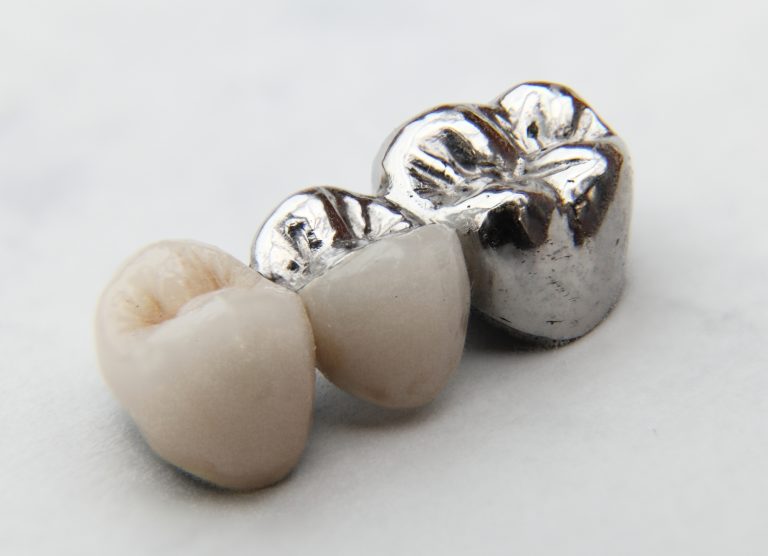Are you missing a tooth or multiple teeth? If so, you are likely a candidate for a dental bridge. Dental bridges close the gap caused by missing teeth, and the benefits go beyond simply restoring your smile. Did you know that missing teeth also adversely affect your ability to chew and speak, and lead to increased risk of tooth decay, gum disease and other dental issues? If you’re looking to replace a missing tooth, a bridge could be the solution you need.
There are three kinds of dental bridges:
Traditional bridges use two crowns on either side of a missing tooth to anchor an artificial tooth replacement (pontic). The crowns are placed over the adjacent teeth and are referred to as “abutments.” They are made of either porcelain fused to metal or ceramics. To prepare the adjacent teeth, your dentist will remove the enamel and dentin to make room for the crowns. That sounds painful, but don’t worry — your dentist will use local anesthesia so you won’t feel this process! Traditional bridges are the most common type of bridge, and can be placed anywhere in the mouth.
Cantilever bridges are similar to traditional bridges, but use only one abutment instead of two. This option is necessary if you only have a tooth on one side of the missing tooth or teeth. Instead of placing an abutment on either side of the missing tooth, your dentist will place one or two abutments on one side to anchor the pontic in place. Because the pontic is anchored only on one side, there is an increased risk of the bridge loosening over time. Cantilever bridges are not recommended for teeth in the back of the mouth that are subject to more pressure from chewing. However, cantilever bridges are still a good option when dental implants or traditional bridges are not possible.
Resin-bonded bridges, also referred to as Maryland bridges, do not use crowns to anchor the pontic. Instead, a porcelain or metal framework is anchored to the backs of the two adjacent teeth to hold the pontic in place. Because crowns are not used to anchor the teeth, the adjacent teeth do not need to be filed as with a traditional or cantilever bridge. Like cantilever bridges, these are typically not recommended for teeth in the back of the mouth.
Dental bridges are typically placed in the mouth over two visits. During the first visit, your dentist will prepare the abutment teeth and make an impression of your mouth. While your permanent bridge is being prepared, your dentist will place a temporary bridge to protect the abutment teeth. At your next visit, your dentist will place the permanent bridge and check to ensure it fits properly. It is critical that you maintain proper oral hygiene to prevent tooth decay and gum disease. If properly maintained, your bridge can last up to 10 years!
If you are missing teeth and would like to discuss your options, our staff would be glad to speak with you and ensure you have an optimal experience at our office. Give us a call at (256) 837-3800 to schedule an appointment!

